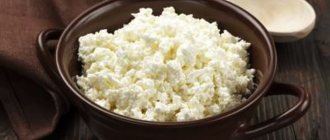Sugar is a carbohydrate that a person needs in moderate quantities to provide the body with glucose and fructose. It helps produce energy and promotes normal brain activity. This bulk product is found in almost every home. Sometimes it is bought in large quantities for making jam, so as not to overpay for it during the harvesting season. Despite the fact that this product can retain its qualities for quite a long time, you should know how to store sugar so that the product does not become too moist and does not acquire an unpleasant odor.
How to choose
Wet sugar, which is sometimes found on sale, was most likely stored incorrectly. But some sellers deliberately keep it in conditions of high humidity in order to increase the weight of the product.
Appearance is what you should pay attention to first. A product that has been stored and transported correctly must be:
- loose (not wet);
- without lumps;
- painted white without a yellow tint;
- have a pleasant faint sweetish odor;
- do not contain foreign inclusions in the form of various debris.
Due to the increased hygroscopicity of the product, when located next to water, it is able to absorb 4 - 5 liters of liquid in 10 days. This is precisely the trick that unscrupulous sellers resort to in order to increase the weight of the goods.
You can determine the moisture level of a product by squeezing it in your hand. If the sand is dry, it will crumble when you unclench your fingers, and if it is wet, it will remain a lump.
An important factor when storing sugar is its proximity to other products. Next to it should ideally be cereals, pasta or confectionery in closed packages. Those. products that do not have a pronounced odor.
You should not buy products that have been close to spices and other products with a strong smell (sausages, fish), since it will be impossible to get rid of the smell later.
The original packaging in which the product is located must be hermetically sealed. In this case, granulated sugar may cake a little during storage. But it should quickly crumble with the slightest shaking, without forming lumps.
What to do if the expiration date has expired
If stored properly, sugar can remain of high quality for a long time. Even after the expiration date indicated on the package, under optimal conditions it will be suitable for food.
Do you know that…
If the product's shelf life in production warehouses has expired, sugar is not used in the food industry.
If stored improperly, the product loses its properties - color changes, flowability changes, and an unpleasant odor appears. If you have purchased a low-quality product or it has spoiled in your home, do not despair and do not rush to throw it away.
- You can make syrup, jam, and confiture from wet granulated sugar with lumps.
- If there is an unpleasant odor, then the best option is to make homemade alcohol from it (liqueurs, liqueurs, home brew for moonshine). The smell will disappear during fermentation.
Sugar syrup is useful not only in cooking, it is used to feed bees and even for hair removal (sugaring)
How to make jam from lumps
Sprinkling sugar over the berries with large lumps will not work, so first you need to make syrup from it.
- Pour 1 kg of granulated sugar into 100 ml of water.
- Place on the stove to heat up.
- Stir until the crystals dissolve.
Pour berries into the syrup at the rate of 1 kg of fruit per 1.3 kg of sugar. Cook for 10-15 minutes.
Under what conditions should it be stored?
The storage temperature for granulated sugar is considered optimal if it corresponds to +12°C - +22°C. That is why storing sugar in bags on the balcony in winter is unacceptable. Unless, of course, the balcony is heated and the temperature on it is within optimal limits.
- Sugar should be stored in air humidity conditions no higher than 70%, otherwise it will become damp and lumpy.
- Factory compressed refined sugar can be stored at an air humidity of 75% (not higher).
- Storage of sugar in a warehouse at normal humidity and temperature conditions can last up to 8 years. And in conditions of low temperature, its storage time is reduced to 3–4 years.
How long do different types of sugar last?
Not everyone knows that granulated sugar is made from different raw materials. The most familiar and familiar to the average buyer is made from sugar beets. In addition, sugar from sugar cane is often in demand. There are other varieties of this sweet product, such as coconut or maple. Despite the fact that they are all made from different raw materials, they still have the same shelf life: 8 years under the right conditions. The exception is, as mentioned above, vanilla. Therefore, you should not stock up on it for future use, buy several bags.
Storage containers
For several years, sugar will retain its original qualities in a fabric bag. The main thing is to monitor the humidity level in the storage area.
In cases where you plan to use the product within the next year, you can keep it in a plastic bag. Longer storage without ventilation may result in an unpleasant odor.
A container for storing sugar can be made from:
- tin,
- ceramics,
- glass,
- plastic, etc.
It is important that the storage container has a tight-fitting lid.
You can store refined sugar in the manufacturer's cardboard packaging.
To store sugar in bags for a longer period of time, place a small container filled with rice in each of them. The rice will absorb excess moisture if necessary, which will help the sugar maintain its original quality.
Sugar should be stored in bags in places away from heat sources and foods with a strong odor. And to prevent the formation of lumps, periodically shake the container with granulated sugar.
What happens to the product over time?
Sugar practically does not attract household pests such as insects or rodents , so you don’t have to waste effort on fighting them.
The only dangers that threaten sugar during long-term storage are:
- exposure to water;
- exposure to foods or cosmetics with strong odors;
- lack of ventilation, due to which sugar can, as they say, “suffocate” and acquire an unpleasant odor.
In the absence of these unfavorable factors, sugar can be stored at home much longer than the recommended shelf life according to GOST.
Storage
The optimal conditions for storing sugar are heated pantries and other rooms with low humidity levels.
It is important to remember that sugar should not be stored near products with a strong odor and containers with household chemicals, especially if it is in unsealed packaging. This product quickly absorbs environmental odors.
Storing sugar in a plastic bag can normally occur on the shelf of a kitchen cabinet, among pasta and other products without a specific smell.
Storage in bags
Sugar should be stored in bags at a constant temperature (preferably room temperature), in humidity conditions of 70%, and away from sources of strong odors. It is recommended to shake the bag periodically.
Storing Brown Sugar
Brown sugar is not as widely used as white sugar, but according to many researchers, it is more beneficial than beet sugar for the human body.
The reed product has different degrees of purity and crystal sizes.
Cane sugar is most efficiently stored in tightly closed containers (plastic containers, glass containers, zip bags), which can be kept on the shelf of the refrigerator or kitchen cabinet. Before use, a product that has been in a cold place should be warmed to room temperature.
Before storing cane sugar, so that it does not stick together into a lump, put tangerine peels or a piece of bread into the bag.
Using packages
Nowadays, plastic bags are often used for packaging. The weight of products in such packaging varies, but the best choice is 0.5-1 kg packaging. Bags have many advantages due to which they are considered the best for storing sugar:
- ease of storage and transportation;
- strength and reliability;
- protection from various factors;
- Beautiful design;
- different sizes and shapes.
Such packaging is inexpensive, and it also complies with sanitary standards. But other materials, such as paper bags, are also used to store the product.
It is advisable to store the product on the table in a sugar bowl, since this container protects granulated sugar from moisture and dust. Metal, glass, and silver dishes are perfect for this. Ideal products made of porcelain, crystal, ceramics
The dishes must be safe for health, so it is important to consider which company made them
It is important that the container closes tightly. A sugar bowl with a dispenser is perfect for home use
It has a damper, thanks to which foreign odors do not penetrate inside. With its help you can add as much sugar as required.
Storage of refined sugar
The effect of moisture on refined sugar (sugar compressed into small cubes) has a lesser effect on the quality of the product. Compared to granulated sugar, it can withstand storage in conditions of 75% humidity, without losing its original quality.
Store refined sugar preferably packed in a factory-made cardboard box in a kitchen cabinet or pencil case. And if the product was purchased by weight - in hermetically sealed boxes, plastic containers, fabric bags under the same conditions.
Storage conditions for refined sugar must meet the following requirements:
- air humidity – up to 70%;
- storage in a place separate from raw, strong-smelling products and household chemicals;
- storage temperature - +12°C.
If these conditions are met, you can expect that the shelf life of refined sugar will be 10 years.
What does it depend on?
The shelf life of sugar practically does not depend on the raw materials from which it is made . Both cane and beet sugar, which together occupy 99% of the world market for this product, have the same shelf life.
Such exotic types of sugar as palm, sorghum, malt, coconut, grape and maple, popular in some countries of the world, have a similar shelf life according to Russian legislation, since the active substance (sucrose) in them is the same .
The shelf life of various types of sugar is determined by the storage conditions and the type of container in which it is contained.
Pests
Sugar cannot spoil, like cereal, for example, and bugs cannot grow in it either. Its main enemy is moisture. But there is one sweet tooth who poses a threat to the quality of the product. This is a yellow house ant. Whole families of them settle in bags of food, and it is almost impossible to drive them out of there. In this case, the entire contents of the bag will have to be thrown away. And treat the room where it was located with insecticides, trying to get to the insect nest.











